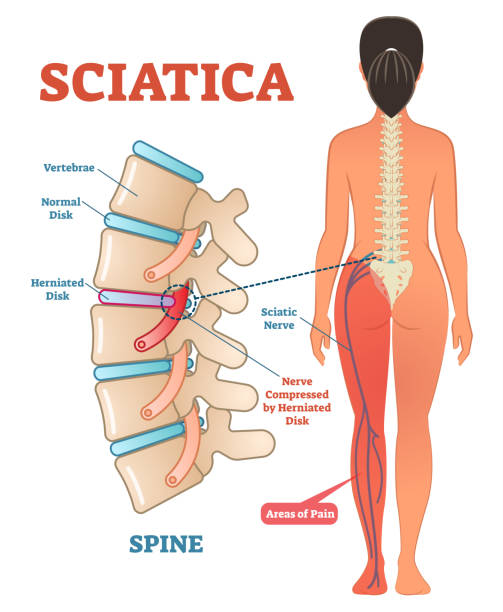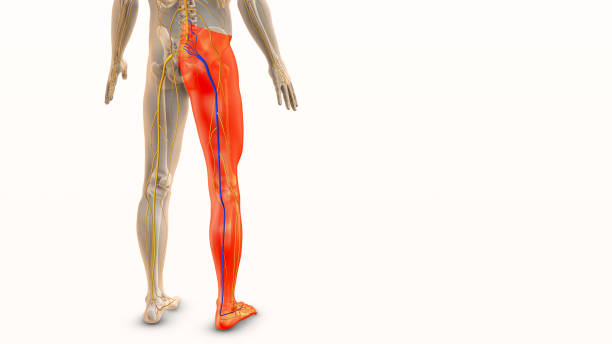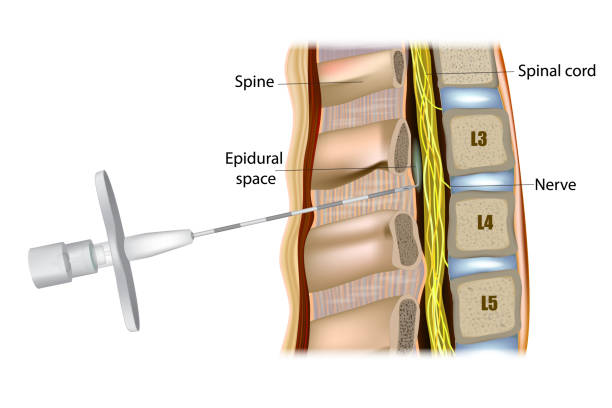
Sciatica Treatment in Bangalore: Effective Relief for Sciatica Pain

Back pain might appear to be a run-of-the-mill condition, yet to most it is an indication of something much deeper—sciatica. This can interfere with normal activities, restrict mobility, and have people struggling with performing everyday tasks. Globally, health statistics show close to 40% of individuals will develop sciatica during their lifetime, and in India it is a key factor causing increasing numbers to consult about spinal issues.
Dr. Naveen Tahasildar, one of the best Spine Surgeons in Bangalore with expertise in complicated spine conditions says:
“Sciatica is something bigger than back pain. This condition is frequently associated with compression of nerves and can result in radiating discomfort along the leg. Unless treated timely, it can impair mobility and quality of life. The best thing is, with early treatment and state-of-the art surgery as well as non-surgical treatments, there is long-term relief for most individuals.”

Curious about why this pain feels so different from regular back pain? Let’s break it down in simple terms.
Understanding Sciatica
Sciatica is a type of pain that begins in the lower back and travels down the course of the sciatic nerve, most often affecting just one leg. This nerve is the largest in the body, running from the spine to the feet, which is why the pain can travel so extensively.
In simpler words, sciatica happens when something—often a slipped disc or spinal narrowing—puts pressure on the sciatic nerve. This pressure causes sharp, shooting, or burning pain that can be extremely distressing.
Struggling with persistent back or leg pain? Consult a qualified spine specialist for an accurate diagnosis and personalized treatment plan.
Wondering what really triggers this painful condition…? Let’s explore the root causes next.
Causes Of Sciatica
Sciatica develops when the sciatic nerve gets compressed or irritated. This can happen for several reasons:
Herniated Disc:
A slipped disc can press on the sciatic nerve, causing sharp, radiating pain.
Spinal Stenosis:
Narrowing of the spinal canal may lead to nerve compression.
Degenerative Disc Disease:
Age-related wear and tear on spinal discs can irritate nerves.
Spondylolisthesis:
When one vertebra slips forward over another, it can pinch the nerve.
Spinal Tumors or Infections:
Though rare, these conditions can also lead to nerve irritation.
Pregnancy:
Increased weight and spinal changes can sometimes trigger sciatica in expecting mothers.

Dr. Naveen Tahasildar, an accomplished Spine Specialist in Bangalore, emphasizes:
“Every case of sciatica has a unique cause. That’s why treatment should always begin with a thorough evaluation. Identifying whether it’s disc-related, degenerative, or structural helps decide the right plan, ranging from conservative care to advanced surgical correction.”
So how do you know if what you’re feeling is sciatica or just ordinary back pain? Let’s find out.
Sciatica Symptoms
Sciatica pain often has distinctive features that make it stand apart from general lower back discomfort.
Common signs include:
- Radiating pain that moves from the lower back down through the buttock and leg.
- Numbness or tingling sensations of pins and needles in the leg or foot.
- Weakness or difficulty in lifting the foot or moving the leg normally.
- Worsening pain while sitting, unlike muscle pain, sciatica often intensifies when sitting.
- Unilateral pain that affects only one side of the body.

Experiencing sharp shooting pain down your leg? Don’t ignore it—consult a spine specialist for early intervention and relief.
Now that the signs are clear, let’s walk through the treatment choices available.
Treatment Options for Sciatica
The right treatment depends on how severe the pain is and what’s causing it. Here are the commonly recommended options:
Lifestyle Modifications:
Rest, posture correction, and regular stretches can help ease mild symptoms.
Medications:
Pain relievers, anti-inflammatory drugs, or muscle relaxants may be prescribed.
Physiotherapy:
Targeted exercises strengthen the back, improve flexibility, and reduce nerve pressure.
Epidural Injections:
In some cases, steroid injections help reduce inflammation around the nerve.
Minimally Invasive Spine Surgery:
This approach uses very small cuts instead of large ones. Special tools and cameras are used to reach the spine without disturbing much muscle or tissue.
Procedures like microdiscectomy (removing only the damaged part of a disc pressing on a nerve) or spinal fusion (joining two bones of the spine to stop painful movement) fall under this. The benefit is quicker healing, less pain after surgery, and smaller scars compared to traditional surgery.


Advanced Surgical Procedures:
Sometimes, the condition is more complicated—like severe spinal deformity or a spinal tumor. In such cases, bigger surgeries are needed.
Deformity correction helps straighten and stabilize a crooked spine (like scoliosis). Tumor resection means removing a growth or tumor from the spine to protect the nerves and spinal cord. These are usually rare but very important to restore stability and prevent further damage.
Dr. Naveen Tahasildar, a highly regarded Spine Surgeon in Bangalore, notes:
“The majority of patients recover with non-surgical measures. Surgery is considered only when pain persists or when neurological function is at risk. The aim is always to restore mobility and help patients return to their normal lifestyle safely and effectively.”
Wondering what makes one clinic stand out from another for sciatica care? Here’s what to look for.
Why Choose Us for Sciatica Treatment in Bangalore
Choosing the right spine specialist can make all the difference in recovery. Patients prefer us because:
Expertise in Complex Spine Surgery:
Over 17 years of experience managing even the most difficult spine problems.
Advanced Techniques:
Skilled in modern, minimally invasive methods that reduce pain and speed up recovery.
Personalized Care:
Each patient receives a treatment plan designed specifically for their condition.
Focus on Safety and Recovery:
Every step is taken to lower risks and help patients return to normal life quickly.

Continuous Learning:
Regularly updates knowledge by taking part in national and international spine forums.
Proven Track Record:
More than 3,000 successful surgeries carried out with consistent results.
International Training:
Fellowship programs in top hospitals abroad bring global standards of treatment.
Research and Publications:
Published work in leading journals highlights his role in advancing spine care.
Teaching Role:
Actively trains young surgeons, reflecting his respected standing in the field.
Compassionate Approach:
Always listens to patients, understands their worries, and supports them throughout treatment.
Searching for reliable sciatica treatment? Get professional guidance for long-term relief and improved quality of life.
Wouldn’t it be better if sciatica pain could be avoided in the first place? Let’s see how prevention works.
Everyday Habits to Protect Your Spine
While not all cases can be prevented, adopting healthy habits reduces the risk significantly:
Maintain Good Posture:
Proper alignment reduces stress on the spine.
Stay Active:
Regular walking, stretching, and strengthening exercises protect the back.
Lift Safely:
Always bend at the knees, not at the waist.
Healthy Weight:
Extra weight adds pressure to the lower back.
Quit Smoking:
Smoking accelerates disc degeneration, increasing the chances of sciatica.

Still have doubts lingering in your mind? Let’s clear them up with some common questions.
FAQs
Can sciatica go away on its own?
In some cases, mild sciatica resolves within a few weeks with rest and self-care. However, if pain persists or worsens, professional evaluation is important.
Is sciatica always caused by a slipped disc?
No. While herniated discs are a leading cause, sciatica can also result from spinal stenosis, arthritis, or even spinal injuries.
Does sitting for long hours worsen sciatica pain?
Yes. Prolonged sitting puts extra pressure on the lower spine and can aggravate nerve compression. Frequent breaks and posture changes help.
What’s the difference between regular back pain and sciatica?
Regular back pain stays localized, whereas sciatica pain radiates from the lower back down the leg, often with numbness or tingling.
When should I worry about sciatica?
Seek urgent care if you experience loss of bladder or bowel control, severe leg weakness, or sudden worsening pain, as these may signal serious nerve involvement.
Disclaimer: The information shared in this content is for educational purposes only and not for promotional use.
